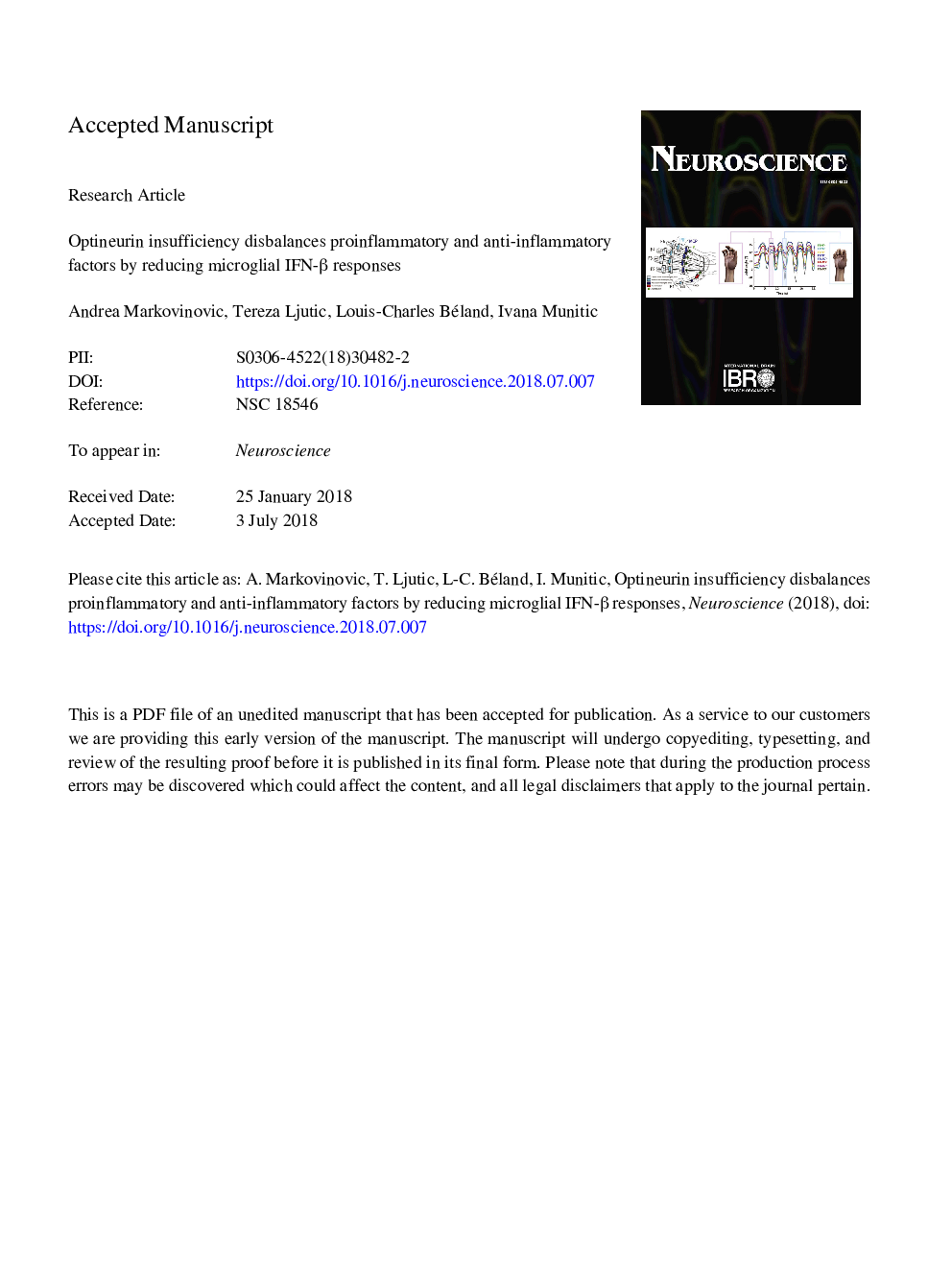| Article ID | Journal | Published Year | Pages | File Type |
|---|---|---|---|---|
| 8840544 | Neuroscience | 2018 | 32 Pages |
Abstract
Mutations in a ubiquitin (Ub)-binding adaptor protein optineurin have been found in amyotrophic lateral sclerosis (ALS), a neurodegenerative disease with a prominent neuroinflammatory component. Unlike more frequent ALS mutations which cause disease by gaining toxic properties such as aggregation, mutated optineurin is thought to cause disease by loss-of-function, highlighting its neuroprotective role. Optineurin regulates inflammatory signaling by acting as a scaffold for Tank-binding kinase 1 (TBK1) activation and interferon (IFN)-β production in peripheral immune cells. The relevance of this pathway in the CNS is unclear. To investigate IFN-β pathway as a potential mechanism of optineurin-mediated protection from neurodegeneration, we have generated a mouse model in which the Ub-binding region of optineurin was deleted (Optn470T), mimicking C-terminal truncations found in patients. Here we report reduced TBK1 activation and IFN-β production in primary microglia from Optn470T model upon Toll-like receptor (TLR) stimulation. Likewise, we found diminished expression and activation of several transcription factors that support the amplification loop for IFN-β production including STAT1, IRF7 and IRF9. Notably, although optineurin was also reported to block proinflammatory transcription factor NF-κB, normal NF-κB activation and TNF production were found in Optn470T microglia. However, expression of both proinflammatory and anti-inflammatory factors distal to IFN-β was diminished, and could be restored upon IFN-β supplementation. Taken together with the recent discoveries of TBK1 mutations as an important genetic factor in ALS, our results open up the possibility that disruption of optineurin/TBK1-mediated IFN-β axis leads to an immune failure in containing neuronal damage, which could predispose to neurodegeneration.
Keywords
BMDMRT-PCRIFN-βNEMOC9orf72IκBTLRLC3SOD1IKKIBA1TDP-43OptineurinNOS2CXCLRipk1IRFTBK1SQSTM1sequestosome 1TNFTGF-βTRAF family member-associated NF-κB activatormicrotubule-associated proteins 1A/1B light chain 3DMEMNF-κBPAMPsGAPDHMEFDAMPsLPSHRPFUsIFNARIκB kinaseROSSTATamyotrophic lateral sclerosisinflammationdamage-associated molecular patternspathogen-associated molecular patternsinterferonIFNinterleukinALSParkinson’s diseaseTransforming Growth Factor BetaImmunomodulationNeurodegenerationTANK-binding kinase 1Toll-like receptorfused in sarcomaCNSsuperoxide dismutase 1central nervous systeminterferon regulatory factortumor necrosis factornuclear factor kappa-light-chain-enhancer of activated B cellslipopolysaccharideCXC chemokine ligandBone marrow-derived macrophagesSignal transducer and activator of transcriptionDulbecco’s modified eagle’s mediumtankNF-κB essential modulatorionized calcium-binding adapter molecule 1mouse embryonic fibroblastsMultiple sclerosisMicrogliaknockoutnitric oxide synthase 2real-time polymerase chain reactionHorseradish peroxidasereceptor-interacting protein kinase 1poly (I:C)Polyinosinic:polycytidylic acidglyceraldehyde 3-phosphate dehydrogenaseReactive oxygen species
Related Topics
Life Sciences
Neuroscience
Neuroscience (General)
Authors
Andrea Markovinovic, Tereza Ljutic, Louis-Charles Béland, Ivana Munitic,
